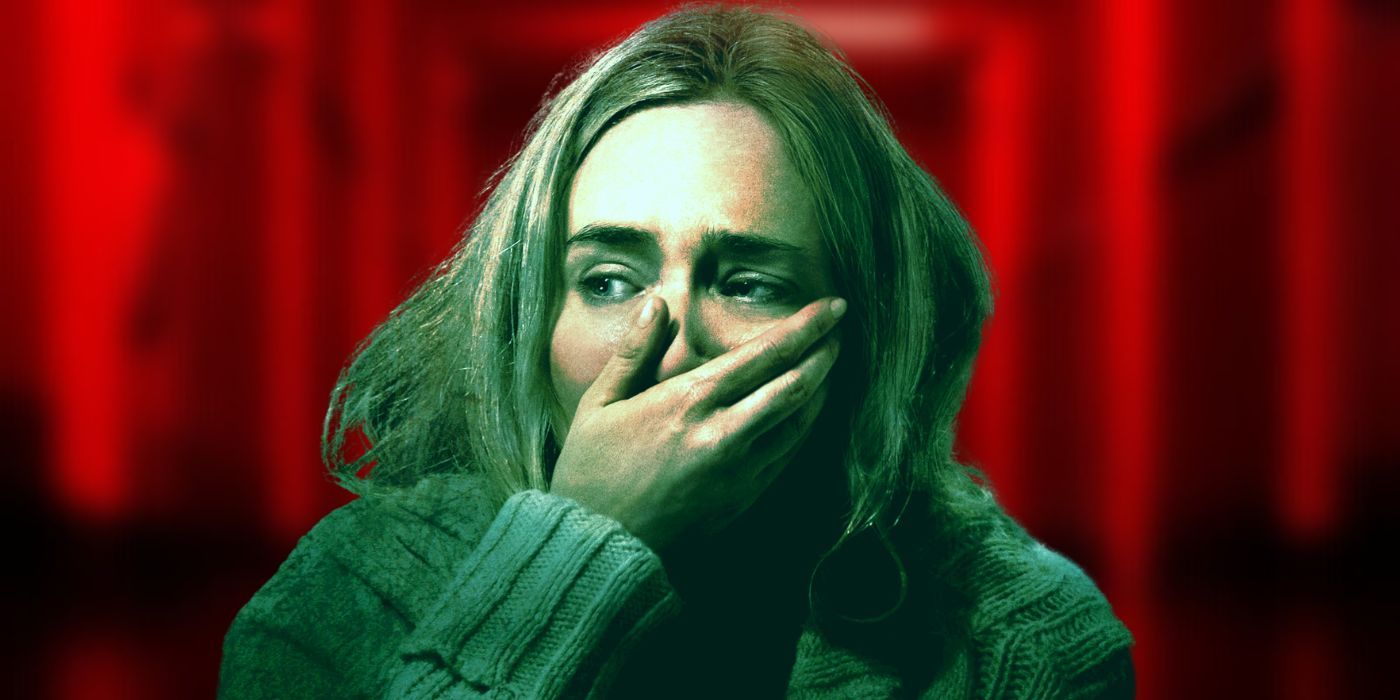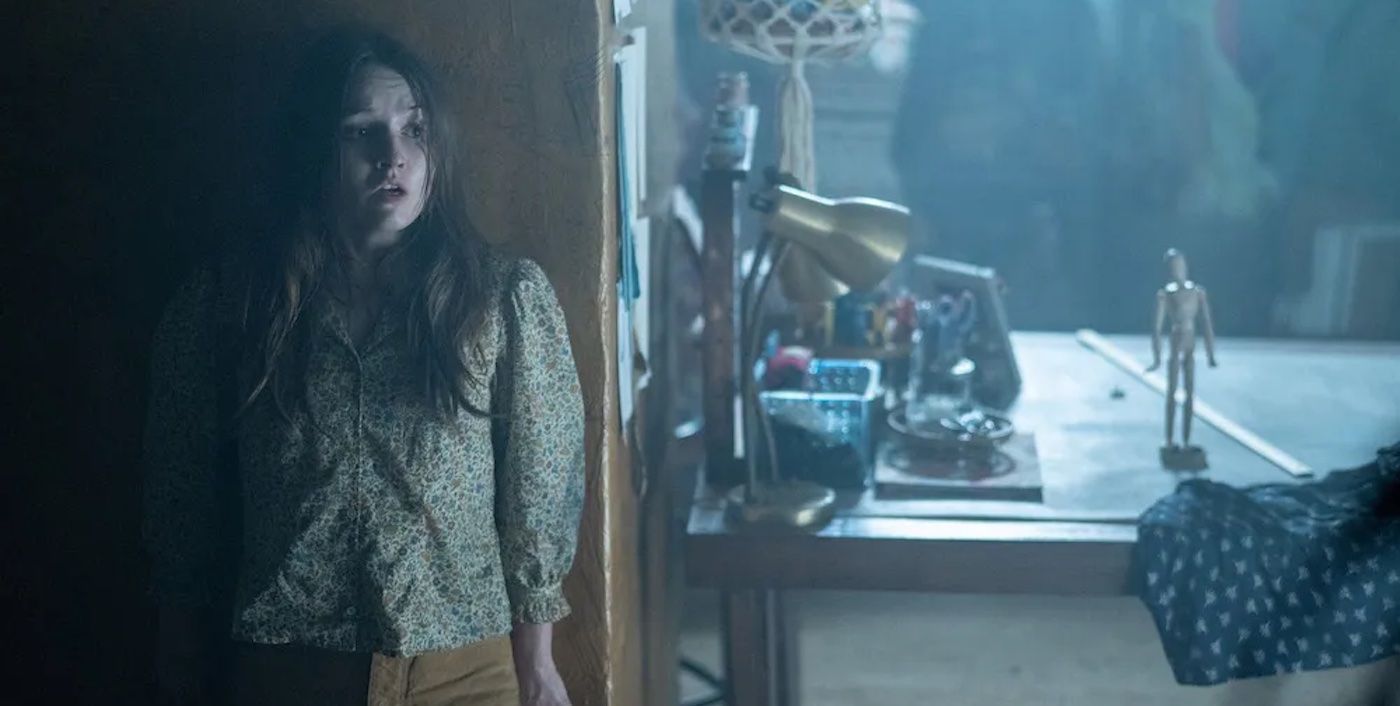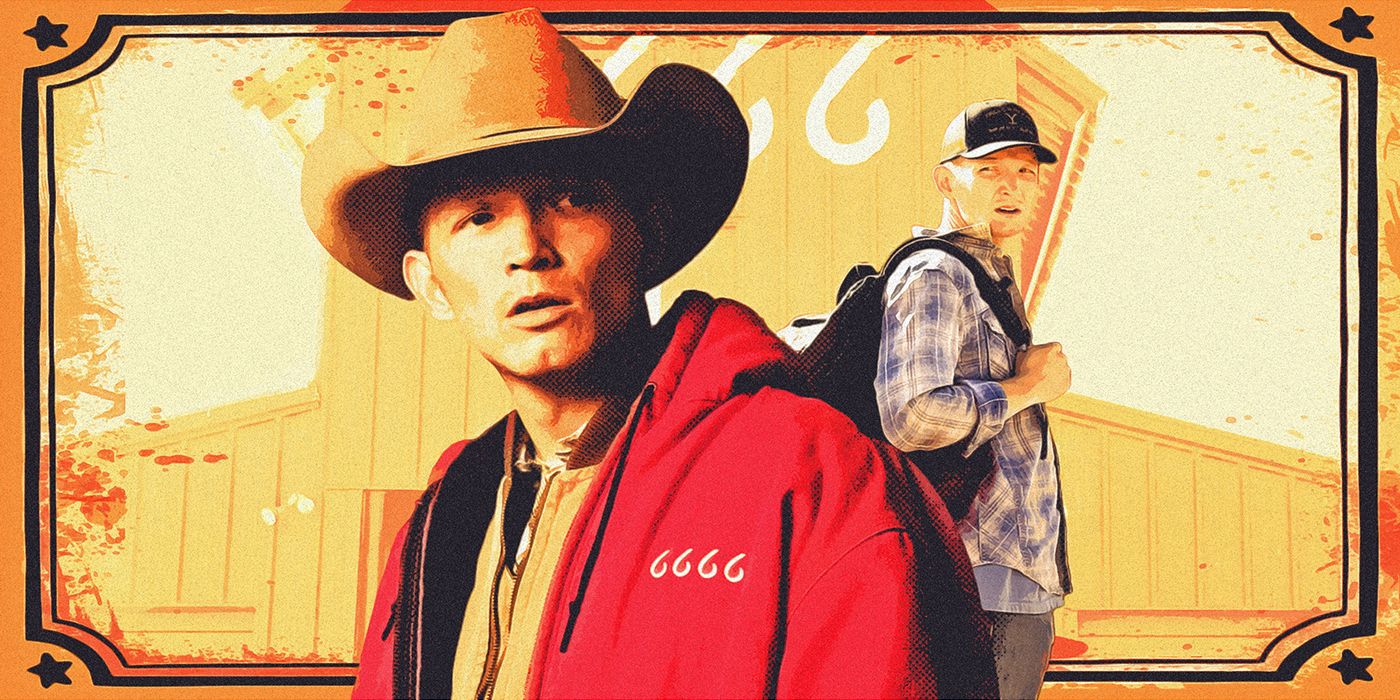The Big Picture
- Silent horror films of the past utilized visual elements and atmosphere to tell their stories, making them effective and timeless.
- Modern horror films, such as A Quiet Place and Hush, continue to explore the power of limited dialogue, pushing the boundaries of storytelling.
- By focusing on other elements like atmosphere, sound design, and visuals, horror films can create immersive experiences that are more compelling and terrifying without excessive dialogue.
In 1920, the first “true” horror film was released; well, according to film critic Roger Ebert at least. The Cabinet of Dr. Caligari is a silent film and is fairly devoid of any dialogue. Yet anyone who has seen the film will not remember it for this reason, but rather for its creepy atmosphere and its unnerving, avant-garde set design. There was no need for the groundbreaking film to have excessive dialogue, or any dialogue at all, regardless of it being made during the silent film era. Instead, The Cabinet of Dr. Caligari, like many other horror movies that followed, used every other aspect of filmmaking to successfully tell its story. Sometimes, these films are more effective than others in the genre that do use a lot of dialogue. Even films that are not horror, like the Oscar-winning homage to silent films The Artist from 2011, have found success in focusing on other elements like the score, atmosphere, and visuals.
Modern horror films have taken this route since the 1920s, and have gotten even more creative with their exclusion of dialogue to various degrees, such as recent horror staples like A Quiet Place and Hush. No longer being restricted to a past era of filmmaking, newer entries in the genre will sometimes follow the route of their silent predecessors. There are many examples of horror films that suffer from relying too much on dialogue, falling into traps of hand-holding, over-explaining, or being too absorbed in their plot, preventing them from being effectively scary. Horror films that actively limit the dialogue are often more interesting and effective, focusing on an immersive atmosphere, a compelling story with high stakes, and life-like characters.
Nosferatu (1922)
Vampire Count Orlok expresses interest in a new residence and real estate agent Hutter’s wife.
- Release Date
- May 18, 1922
- Director
- F.W. Murnau
- Cast
- Max Schreck, Alexander Granach
- Runtime
- 94 minutes
- Main Genre
- Horror
- Tagline
- The Vampire Lives
- Genres
- Horror
The Silent Film Era Paved the Way For Films Lacking Dialogue to Come
The earliest horror films are endearingly experimental, as filmmaking technology was in its earliest stages. The first signs of a horror genre came from short films, often a clear way for a filmmaker to experiment with early 1900s special effects. The very first of its kind was The House of the Devil by George Melies, the same director behind the legendary A Trip to the Moon. Eventually, horror features slowly came onto the scene. Then, the horror genre was predominantly defined not by supernatural elements or the number of scares, but rather by German Expressionism. Along with The Cabinet of Dr. Caligari, films such as Nosferatu and The Student of Prague almost entirely made up horror’s first subgenre. This type of film was not committed to portraying reality but rather used warped visuals and over-the-top performances to depict uncanny surrealism. Due to its peak occurring during the silent film era, German expressionist horror films were without dialogue. Audio technology or not, the lack of talking made sense for the subgenre and only added to its unsettling aura. Rather than being too old or dated for present-day audiences, the silence in these horror films makes them more successful and allows them to stand the test of time.
Nosferatu, directed by F. W. Murnau in 1922, is another horror film that lacks dialogue. It is also considered one of the most influential horror films of all time, telling the story of a vampire stalking a young woman in an unauthorized Dracula adaptation. When talking about some of the most unsettling, convincing horror films, Nosferatu will probably be brought up. This is mostly because of its hair-raising visuals, particularly involving the titular vampire. And it’s not just how Count Orlok (Max Schreck) looks, but rather how he is filmed and presented to the audience. Instead of excessive, quick cut-aways and jump scares, the camera is unafraid to linger on the horror, with the count rising out of his coffin, or slowly creeping up the stairs in one of the most well-known shots in film history. Film scores also played a large part in this era, as there were also no sound effects to accentuate the scariest moments.
Another successful silent film is Alfred Hitchcock‘s thriller, The Lodger: A Story of the London Fog. The film follows an active serial killer and his crimes. Inspired by the horror films that preceded it, The Lodger‘s silence contributes to the slow build of tension as the dangerous killer becomes the tenant of an unknowing couple, and their suspicions of his true nature are slow to kick in. Without the use of sound, Hitchcock uses every visual element to drive the point home: that everything that unfolds on screen is leading up to something both terrible and terrifying. While horror films like The Lodger were restricted to the technology of the time, its early effects, storytelling styles, and odd visuals no doubt inspired filmmakers to tell their stories without much talking at all.
Some of The Best Modern Horror Films Have Little to No Dialogue
Since the silent film era 100 years ago, the horror genre has gone through many phases and changes, from slasher flicks to “elevated horror.” Film technology has reached impressive heights since the 1920s, giving viewers everything between the campy cautionary tale M3GAN and the experimental oddity Skinamarink. When it comes to modern horror omitting dialogue, the choice never restricts but pushes the storytelling abilities even further. Movies like A Girl Walks Home Alone at Night and The Silent House, while lacking in dialogue, often make for some of the most interesting horror films in recent years. It could even be argued that it is the misuse or overuse of dialogue that holds a horror film back, rather than when it is omitted entirely.
The biggest example of a film like this is A Quiet Place, a sci-fi horror film and budding franchise that made a considerable impact on the genre by incorporating the lack of dialogue so heavily into its plot. Directed by John Krasinski, the post-apocalyptic film follows a family that must survive in a world that has been taken over by monsters with heightened hearing. The only way the family can function in their day-to-day lives without being pursued by these monsters is to be completely silent, 24/7. Early in the film, viewers are forced to understand how high the stakes are in this dystopian world when a young child is swiftly killed by a monster after playing with a toy that emits a loud sound. The entire scene is built up through a peaceful stillness in sound, as each member of the family must walk through the woods barefoot until the toy spaceship puts a crack in the hesitant tranquility. All the family can do is watch in horrific silence, as they know there is no saving the child, and any other sound would get them killed too.
Weaving the presence of dialogue into the plot raised the stakes to unfathomable heights, further proven in a later scene when the mother of the family (Emily Blunt) must give birth, alone, while making as little sound as possible. The excruciating situation is made worse once the newborn baby cries, reminding viewers that making no sound is virtually impossible and that our characters are in mortal danger at every moment. Mike Flanagan‘s Hush is also successful in having sound be integral to the plot, with a deaf author (Kate Siegel) being hunted by an unknown man (John Gallagher Jr.) in the Wait Until Dark-esque horror/thriller. Dialogue is minimal, with a few conversations in the beginning and taunting dialogue from the masked killer but once the chase begins, the talking stops. Viewers are often put in the shoes of Maddie, making the film almost completely silent at times.
Less Dialogue Allows Horror Movies to Floruish in Other Areas
In the same vein, the lack of dialogue in a horror film often leads to extraordinary worldbuilding, immersing viewers in an atmosphere that is both nightmarish and life-like. The recent extra-terrestrial horror film No One Will Save You is an expert at dropping viewers into a bad dream without wasting any time, setting up a survival scenario for the heroine (Kaitlyn Dever) as she discovers a humanoid creature in her house. As she seeks help outside her home and ultimately fights a fleet of creatures alone, all of a sudden you realize: there has barely been any dialogue. The film takes “show, don’t tell” to its literal meaning, making its shocking yet unsettling ending feel like the embodiment of nausea. Under the Skin by Jonathan Glazer also creates a cruel, isolating atmosphere as viewers watch a mysterious woman, Laura (Scarlett Johansson), lure men into a house, where they are swallowed up by a dark void. Dialogue is entirely an afterthought in the science-fiction film, and one incident after the next simply unfolds on-screen. The minimal conversations between characters create a feeling of being the last person on Earth, further emphasizing that Laura is an outsider in an uncomfortable but melancholy way.
Under the Skin, and other films like it, would not be as effective if the dialogue was used to overexplain its themes and message. Many films, especially of the horror genre, fall into this trap of turning dialogue into too much of a fallback, and once the message is revealed, the audience has already guessed it and checked out. Contrary to the belief that silent films or films that lack dialogue are boring, these creative and often groundbreaking films are captivating. The void that no dialogue would typically create is filled with other elements made exceptional by a haunting soundtrack, compelling acting performances, and a mesmerizing world. Some of the most terrifying moments in real life, whether it be going down into the dark basement or being home alone, occur in complete, awful silence. Times like these prove that horror films do not need dialogue, and are sometimes better off without it. With haunting visuals and genuinely scary stories, what is there to say?
Nosferatu is available to stream on Tubi in the U.S.
Watch on Tubi





